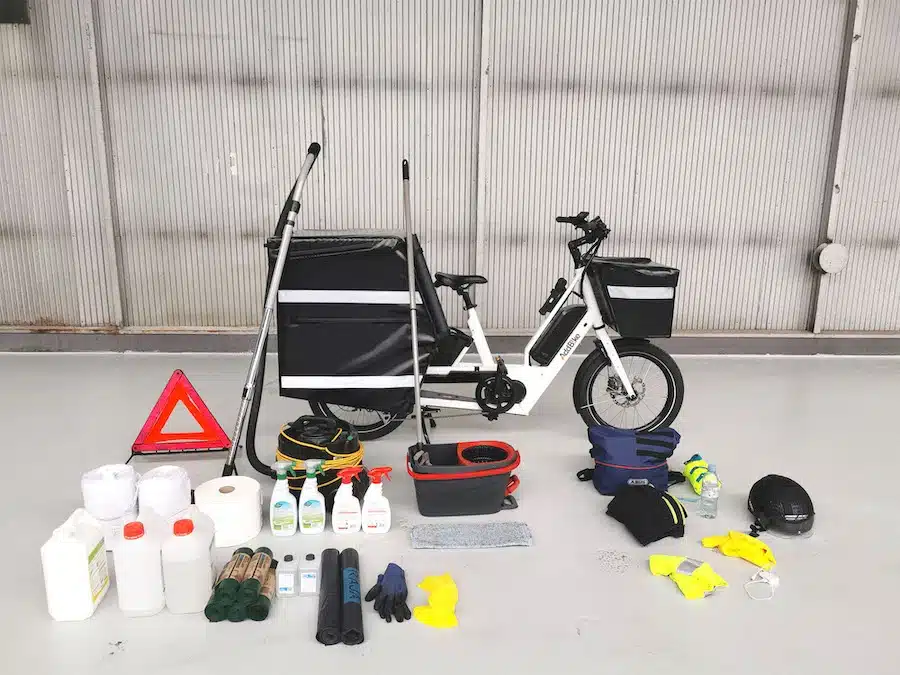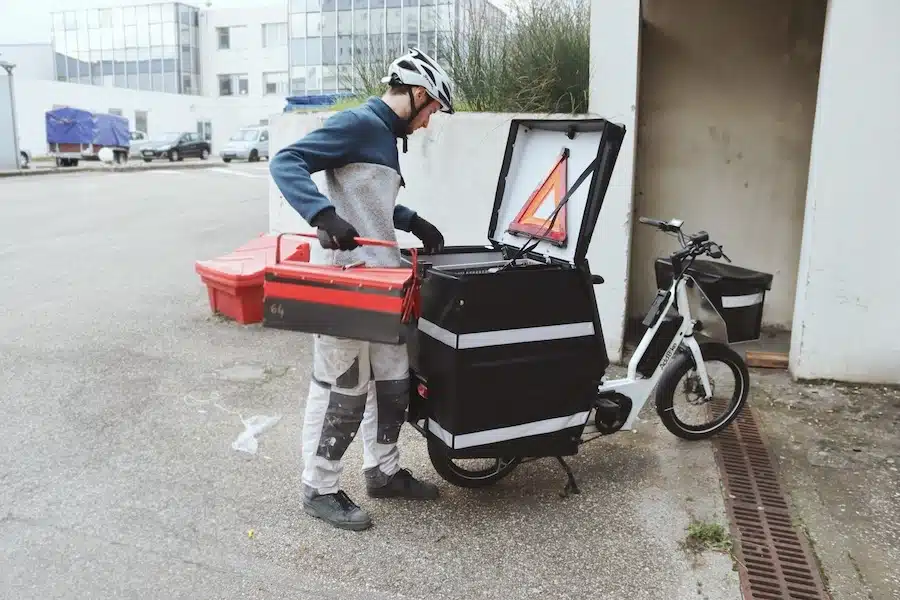No products in the cart
Delivery by load bike: a trend shaping the future of mobility?
Bicycles have been part of our lives since centuries. Originally a symbol of freedom, today it represents a chance for a better future.
Looking back at history, there was a time when bicycles were the leaders of mobility, until the arrival of cars. In the 20th century, cargo bikes were commonly used by traders and craftsmen to transport goods. This object rapidly took over horses and trains because it was both a practical vehicle and with a great charging capacity.
With fuel prices rising, environmental concerns and a societal change after the pandemic; soft mobility practices have become quite popular among city dwellers. Bicycles allow you to get around town in a safe, fun & greener way. Let’s have a better look at why…
Load bike & e-bikes have become an integral part of the cityscape
The mutation of the road landscape already started a few years ago and was greatly pushed by the Covid-19 crisis.
Thus, in the UK and in some parts of Europe, several governments are funding substantial improvements for their cycling infrastructure. With longer, larger and safer cycle paths- more people are encouraged to cycle. This includes families, elderly and even pros. By extending cyclable paths, residents of the outskirts are also provided a more accessible and convenient way to reach the city centre.
On top of that, some countries also offer subsidy to help the purchase of bicycles and e-scooters. Electrically assisted, foldable, cargo, three-wheeled… There are bicycles for every taste and budget to choose from!
The load bike: somewhere in between a courier & a delivery truck
Beyond individuals, businesses are also doing their fair share! Companies & tradesmen are switching to load bikes, also called cargo bikes, for their trips & deliveries. These improved vehicles are designed to carry very large freights without requiring much effort from the rider, especially when electrically assisted: they are the best alternative to cars for urban errands.
Cargo bicycles are an improved version of the cycle courier delivering envelopes. A three-wheeled version can be almost as nippy as a normal bike, but carry up to 300 L – which enhances productivity performances by at least a triple!
Cargo bikes for delivery
DHL tested a cargo bike with an interchangeable container in 2017 and the result was surprising: according to them, last mile delivery is even faster by bike! Why? Zero traffic and you can really park anywhere. Read the full story here.
“For quite some time this has been something of a niche market, but it’s really moving into another stage. What we’re seeing is the big players – TNT, FedEx, DHL – doing multiple experiments at the corporate level, trying out different ways to use cargo cycles, according to different circumstances.”
Said Randy Rzewnicki, head of the Cycle Logistic project in Europe.

Copyright: Wired.uk
Load bike or tricycle? What model to choose for your business
As you might already know, the bike market offers a great range of options, even for cargo bikes. The most common models are long-tail, three-wheeler and long john. If all these terms seem unclear, don’t worry! You can cover the basics of load bikes here and discover their main advantages/disadvantages to help your research.
Let’s have a brief look at the most common load bike models: the two-wheels and three-wheels cargo bike.
Two wheels cargo bike: smooth like a classic bicycle 📦🚲
Long-tail (or mid-tail) are classic bikes with an extended rear rack. This small modification makes it possible to greatly improve the charging capacity, without changing the riding experience. Therefore, this makes it the perfect cargo bike for every type of usage! The only difference from a regular bike? Cargo bikes are generally larger and heavier. The extra weight won’t be felt though, during the riding, thanks to the electric assistance.
Easy to park anywhere and to navigate through narrow paths, long-tails are especially great for professional usage in urban areas. This can open up new opportunities to access areas otherwise inaccessible by car.
Furthermore, long-tails are commonly considered very safe to ride because of their lower centre of gravity. This means that the bike is more stable and less likely to tip over when carrying heavy loads.


An example of a two-wheeler cargo bike? The U-Cargo Pro!
Specifically designed for beginner riders, this bike has the ease of the rider at heart. For example, the bike frame is low so that anyone can get on and off smoothly. The wheels are puncture-proof and of a size of 20’’ for a low centre of gravity which means better balance!
And the most important part, it can carry up to 270L, thanks to the front and rear box! They’re of course very sturdy and fully waterproof, so that you can ride in every weather condition. The boxes can be organised thanks to the several pockets and movable compartments.
Other things to know about the U-Cargo for pros…
Your products are always safe thanks to the key lock situated on the rear box: you can park the bike anywhere and simply lock your charges until your return. The large kickstand also allows the bike to stay in place even when getting charged with heavy loads.
And of course, it is equipped with a powerful and trustable motor assistance: a 80Nm pedal motor for easy hill climbing, even when fully loaded!
The great adaptability of this bike makes it suitable for artisans, labourers, housekeepers, delivery men and many more!
Our tips: by adding your logo and a bit of creativity on the box you can bring great visibility to your business!
Riding a 3-wheeled-bike: high storage capacity and better charge support 🛺
Generally, a 3-wheeled-bike is very stable and has a high storage capacity that is greatly supported by the third wheel. Thanks to the extra wheel, the bike can easily be loaded (no need for a kick-stand!). They can come with two wheels at the front or back, depending on the model.
In short, this could be a good choice for people that want to deliver on a super sturdy and stable cargo bike. The only downside is that this type of cargo bike has a very different structure from a regular bike, so it will take more time to adjust to it (harder to park and handle).
For people that are already comfortable on bicycles and that need to transport medium-heavy loads, we have designed a three-wheeler accessory that gives you both worlds in on: charge transport but matched with a dynamic riding system.
An example of a three-wheeler cargo bike? The Box Kit!
Much more affordable than a complete bike, it allows you to transform your current bike into a cargo bike.
In a few minutes, your classic bike becomes a cargo bike! With a capacity of 110 L or 35 kg, our sturdy accessory allows you to transport bulky loads with ease.
Fully waterproof and UV resistant, the textile keeps the charges protected and dry in every weather. You can even customise it! Add a sticker with your logo on the white canvas and make it recognisable.

To conclude
A load bike is really adaptable to all situations. It is a fast way to get around city centres and can be used to meet the varied needs of companies. Plus it’s good for the planet! Traffic jams disappear and a parking space is found in no time. And as they say, “Time is money!” and even more so for a company 🙌
By companies also switching to active mobility, we are on the good way for a greener future.
Happy cycling!



